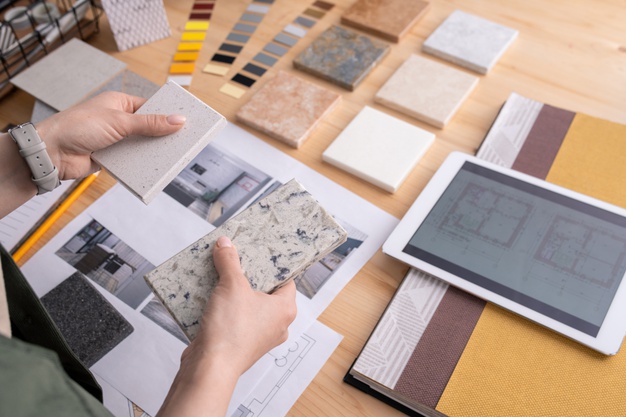

Interior architecture or home interior design comes in a variety of formats and formulas, some of which are completely unique and others that have only minor variations. Nonetheless, each has its own flavour, finish, and experience, allowing it to stand out in different chapters of inspiration, history, and artistic endeavour. Knowing what distinguishes different interior design styles can be a lot more useful than you would think, ensuring you choose the right style for your space and goals and allowing you to achieve visual perfection with a lot less effort. JD Institute has compiled a list of the most popular styles or home interior design ideas for 2021:
Modern architecture and design, which includes interiors, is a broad umbrella term that refers to various design styles that share a common goal: to celebrate content, technology, and composition through authenticity, clarity, and performance.
The Modernist style, which was born at the turn of the twentieth century and was inspired by the preceding Modernist art movement, reinvented our relationship with space and aesthetics to bring us closer to it. A structure was no longer just an inhabitable shell; it had evolved into a living machine.
As a result, modernist interiors are often a dynamic mix of functional programming, meticulous arrangements, and well-articulated lines and geometry. The inherent materiality of a form and an emphasis on visual and functional simplicity are both parts of the design language here.
Minimalist interiors, influenced by traditional Japanese architecture and Zen philosophy and sparked by the Minimalist art movement of the 1960s and 1970s, articulate the driving principles of modernism in an almost puritanical palette.
Minimalism gives us an aesthetic that relies on the efficiency of the design by stripping items down to their bare essentials. Minimalist interiors are devoid of clutter and distractions, allowing bold visual impacts and the underlying use of the room to shine. The use of elements and motifs is kept to a bare minimum, with hidden storage and meticulous detailing taking centre stage. Colours are explored in muted colours, with one or two accents taking the spotlight. These interiors are kept bright and lively by the repetition and movement of lines, as well as a generous introduction of natural light.
Like its other modernist predecessors, the Scandinavian style embodies a shift toward simplicity, versatility, and efficiency; however, it also emphasises affordability in the palette. Scandinavian architecture, influenced by democratic design principles, strikes a delicate balance between minimalist simplicity and wet, personal invitations. Natural materials, bare ornamentation, and clean detailing define this interior design style. The colour scheme is dominated by black and white, with greys and blues or a splash of colour thrown in for good measure. Scandinavian interiors have more rounded and curved silhouettes and contours, combined with organic textures, producing a much cosy vibe in even the most basic layouts and arrangements.
By converting a building’s working parts into its primary aesthetic, industrial interiors celebrate the modernist eye for performance and functionality.
To highlight the ‘machine for living,’ beams, columns, pipes, ducts, and flanges are brought to the fore, giving these interiors a largely masculine overtone. Unlike many other offshoots of the new trend, industrial design interiors do not shy away from weight or roughness, adopting the worn, recycled, and salvaged. Industrial interiors are in warehouses, and this is often the preferred type. Renovations and loft renovations, with soft, neutral colours like greys and browns, and are perfectly complemented by iron or steel, exposed bricks, and unfinished brickwork.. Vintage industrial styles complete the look when it comes to furniture and décor.
By definition, contemporary style is new, and as a result, it is an ever-evolving palette that reflects current trends and preferences at any given time. As a result, defining this style as a collection of predetermined ideas, motives, or characteristics is difficult; however, as a design style, it differs from the modernist aesthetic in that it presents a more balanced and rounded approach to interior design.
With the popularity of the Mid-Century Modern era, contemporary interiors are strongly influenced by it; however, these elements, colours, and lines are laid out in gentler designs that allow for as much visual escapism as a useful tool performance. These are soft, cosy spaces that are far more flexible and intuitive in their development. They are neither cold nor too formal.
Urban style interiors place a premium on elements and designs that carry the gritty vibe of the city inside. This interior design style is not afraid to play with unconventional materials and features, and it picks and chooses from a variety of ideas to create exclusive, often bohemian, looks. The Urban design, like its mentor, leans toward industrial sensibilities and elaborates on structural elements, industrial materials, and exposed ducting. On the other hand, these components are mixed in simple open spaces that float in light colours and clean finishes, giving the proceedings a touch of feminine elegance. In reality, the urban interior is often accompanied by a heavy dose of artistic indulgence, often turning towards the unexpected to gain answers.
You’ll need the necessary skills and experience to work as an interior designer. JD Institute OF Fashion Technology is one of the best institutes for interior design courses like a bachelor of interior design or bachelor of science in interior design. Each course represents an industry-based curriculum to ensure that students are prepared for the real world. JD Institute has received several awards for its outstanding contributions to education, including the international glory award, the Times Force Symbol Award, and several others. They also have a 99% placement rate, with their students working with top companies and making a name for themselves in the industry. Enroll now!